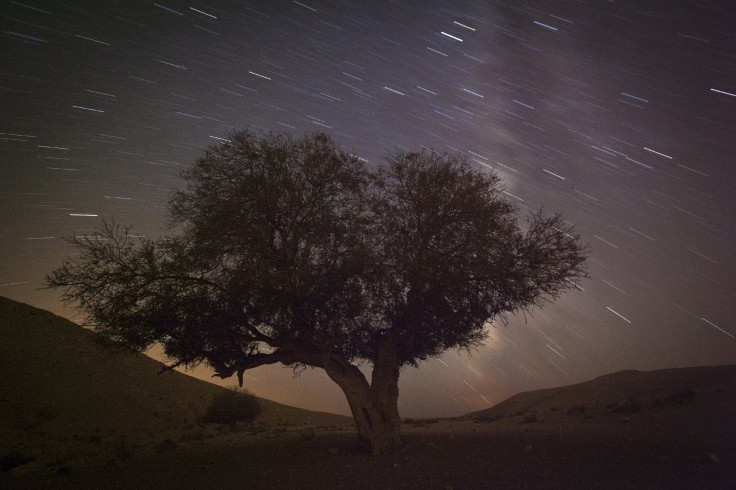Perseid Meteor Shower 2014: Perseids Set To Shine This Week Despite Supermoon

The annual Perseid meteor shower finds itself in an unusual situation -- competing for attention in August with the supermoon. August's full moon will pose a problem for the Perseids as the bright light will black out dimmer meteors.
The Perseid meteor shower peaks around Tuesday or Wednesday although there will be plenty of activity over the weekend and Monday. The Perseids gets its name as the meteors look like they originate from the constellation Perseus. Comet Swift-Tuttle is responsible for the Perseids as Earth crosses into the debris trail the comet leaves behind as it makes its way around the sun. Comet Swift-Tuttle has a large nucleus which means it leaves behind plenty of debris and in a good year, stargazers could see as many as 100 meteors per hour at the Perseids' peak. Comet Swift-Tuttle last passed Earth in 1992 and travels in a 133 year orbit around the sun.
While many stargazers looking forward to the Perseids' peak are worried about the full moon Sunday and bright moon throughout the week, there are plenty of reasons to step outside and look at the night sky for a few meteors.
Swift-Tuttle's debris stream is quite wide, which means you could still see meteors toward the end of month, and the Perseids is known as the "fireball champion," NASA said. Compared to other annual meteor showers, the Perseids have produced 568 fireballs, an extremely bright, streaking meteor, since 2008 compared to 426 for the Geminids and 319 for the Orionids. "The Perseids are rich in fireballs as bright as Jupiter or Venus. These will be visible in spite of the glare," said Bill Cooke, from NASA's Meteoroid Environment Office, in a statement.
With the high rate of meteors and fireballs, chances are you'll see plenty of the Perseids despite the supermoon. Pre-dawn viewing yields the best results. In the northern hemisphere, stargazers should look towards the northeast to find the constellation Perseus.
A video discussing the Perseid meteor shower 2014, courtesy of NASA, can be viewed below.
© Copyright IBTimes 2024. All rights reserved.












